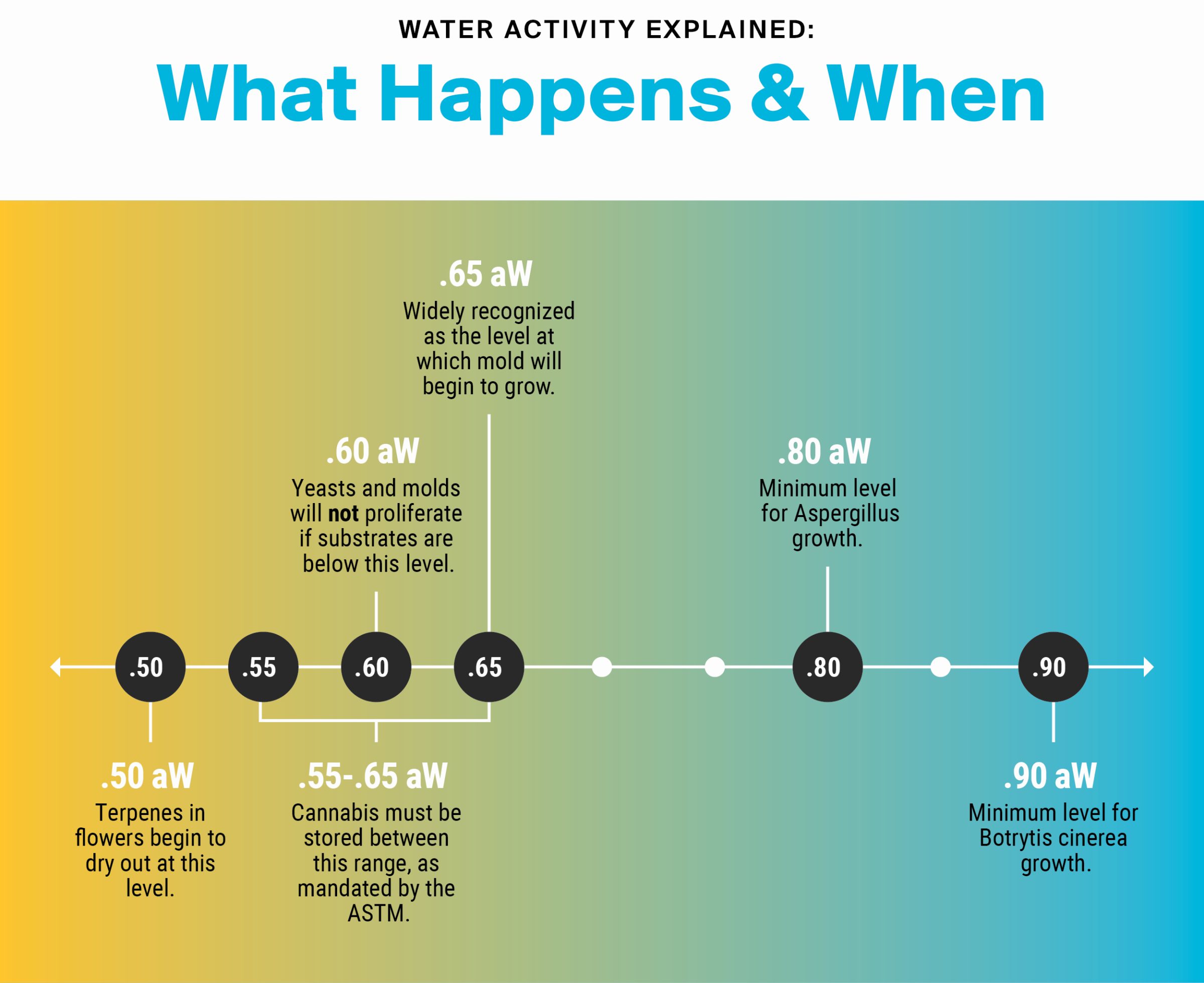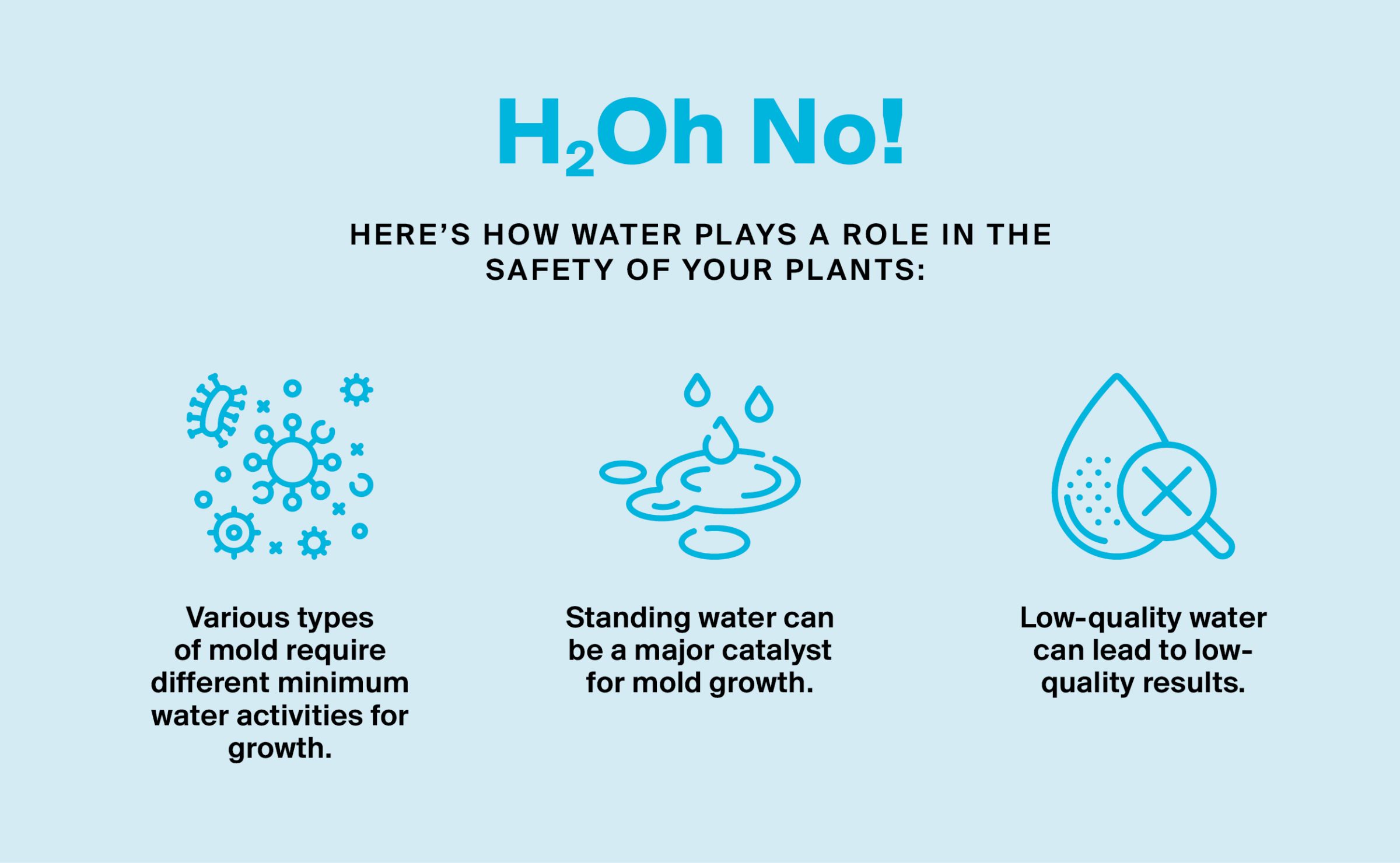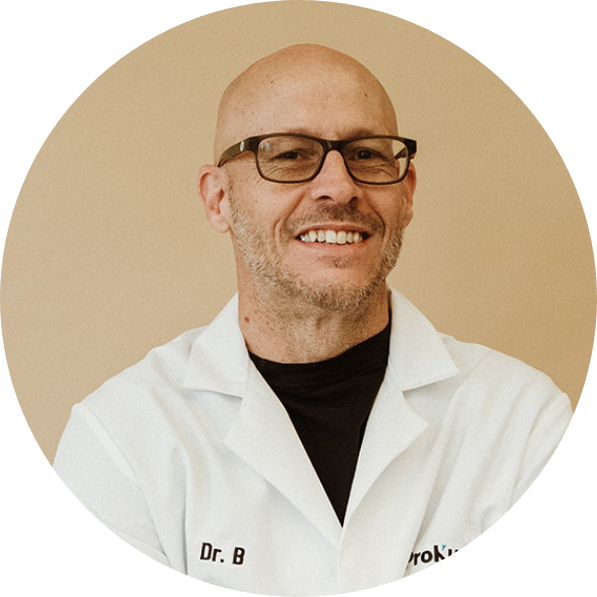In our relentless effort to help our valued partners understand and manage the mold producing effects associated with indoor agriculture, today’s third post of our Fungi Frontier series will take a deeper dive into the role that water plays in supporting a healthy growing facility.
Most cultivators know flower products can spoil during the drying process, but what’s less known is that dried cannabis ready for purchase has a water activity (Aw) below the threshold for microbial growth. This means microbial life – the good and the bad – will only grow if the Aw is sufficient. State regulations set Aw limits for cannabis flower crops that all batches are required to conform to. This is why the American Society for Testing and Materials (ASTM) Cannabis Committee created international standards to help create consistency and regularity that can be used as a “best practice” guide for cultivators.
That’s why we’re here to share our Moldy Wisdom, helping readers segue into better understanding how water impacts your facilities, and what you can do to protect your harvests.
<br>
Don’t Let Moisture Make a Mush-Room for Mold
Water activity of 0.65 is widely recognized as the level at which mold will begin to grow. Below this level, microorganisms have difficulty growing. Above this level, products are at risk for microorganism growth.
Just ask Mold Man – he’ll tell you mold paradise is no fun without enough water!
<br>

<br>
Since water activity is expressed as a decimal, it is similar in practice to relative humidity. Fortunately, this makes it simple to understand and use these limits to create best case scenarios for inhibiting mold growth in consumable products. By mandating a range of 0.55 to 0.65, the standard essentially states that cannabis needs to be stored between 55% and 65% humidity.
This mandated range is important even beyond its efficacy in preventing mold growth. Water activity below 0.50 causes the terpenes in the flower to dry out. Dry terpenes cause the product to smell and taste less potent. Speaking of smell and taste, beyond product protection, the TY&M test has a dual role for quality control purposes as well. Excessive yeast and mold counts can affect the taste, smell, and appearance of products, leading to consumer dissatisfaction and economic losses for producers. Yet another reason to apply a science based, rigorous IPM protocol including TY&M testing.
<br>

<br>
If you’re wondering where water plays a role for increases in TY&M and other safety concerns, we’ve got you covered:
1. Various types of mold require different minimum water activities for growth: In general, yeasts and molds will not proliferate if substrates are not above a water activity (Aw) of 0.6. Botrytis cinerea (a well-known plant pathogen) requires a minimum Aw of 0.9 for growth. Hence, we only see it on plants (not on surfaces) within the cultivation facility. Aspergillus, however, only requires 0.8 and can be found in/on plants as well as throughout the facility on surfaces.
2. Standing water in the facility: Whether it is on the ground or on tables (that do not drain to dryness), there is always some water remaining in/on the trays and tables. Grow-media harbors water, too, and it must be wet to function properly. We must ask ourselves why there is always algae on the grow media. As I have said in every blog, I cannot stress this point more, mold can propagate and release spores into the air for reproduction and inoculation of plants and other areas of the facility within 24-48 hours.
Even the opposite can be true; fungi similar to plants can detect stresses like drying out. Mold will initiate spore formation as a last ditch effort for survival. Cannabis plants will create hermaphrodites as the end of life approaches and pollination has yet to occur. They just pollinate themselves if they have to. Crazy but true! Life has a strong desire to pass on its DNA.
3. Leaks: Consider water that is not seen. This is often discovered too late, in a wall or under a shelf, etc., creating sick building syndrome (where an entire building has been inoculated). Basically, microorganisms are living within the building and actively growing. There is constant pressure on the plants from microorganisms that come from the building. This usually happens when a leak has not been addressed or identified. It can also occur when strict sanitation protocols are lacking. Different building materials will absorb and release different amounts of water at different rates. The longer water activity persists over time, the more moisture will continue to collect in porous materials. Mold spores will germinate, grow, and propagate using these building materials as a food source. I have seen this many times. After a year or so of growing in the same space, issues like these have compounded into serious problems. This is classic mold spore distribution into the air for reproduction that can inoculate the entire space and eventually the entire facility. Unfortunately, the cleverly named sick building syndrome happens often.
4. Water quality: small quantities of microorganisms can propagate within and on growing media and plants. Even using city water which complies with Federal Drinking Water Standards can infect plants and cause safety compliance issues. There is an well known E.coli story in which a facility stored water in tanks for several hours to days based on fertigation schedules. Low levels of E.coli, under the limits for drinking water standards, were able to propagate in the tanks. The water then infected plants and caused them to fail the required state testing.
Water truly is the source of life. Clean water, used correctly, can help us create our most beautiful and productive crops. Standards like TY&M testing help us catch contaminants before they destroy our harvests.
<br>

<br>
In our fourth and final blog in the fungi series, I will continue the conversation beyond borders, looking at how international standards are developed and utilized to protect cultivators and consumers throughout the industry. As always, ProKure is here to provide tips and important details that will help you develop a winning IPM strategy for your facilities, fields, and farms across the globe.
<br>
Until next time!
~ Dr. B

